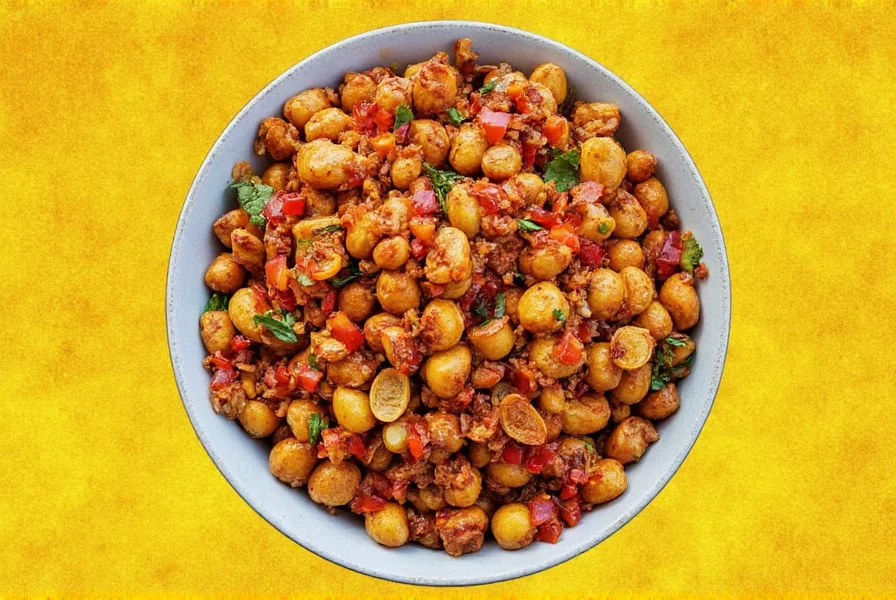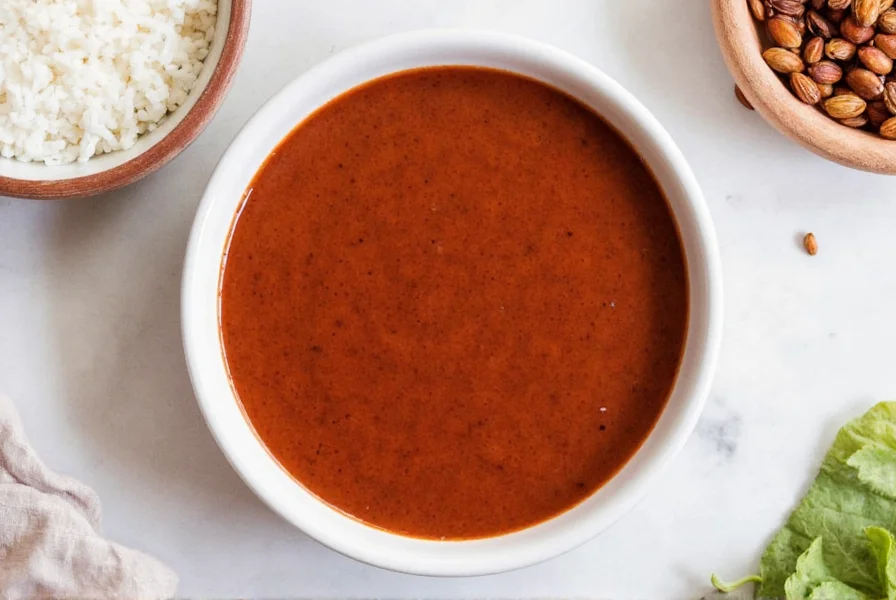Table of Contents
What Is Guajillo Sauce? Quick Definition
Guajillo sauce is a traditional Mexican condiment made primarily from rehydrated dried guajillo peppers, blended with complementary ingredients like garlic, onions, and spices. This vibrant red sauce features a distinctive sweet-tangy flavor profile with mild heat (2,500-5,000 Scoville units), making it one of the most versatile and widely used sauces in Mexican cuisine. Unlike hotter chili sauces, guajillo sauce offers complex berry-like fruitiness with earthy undertones that enhances dishes without overwhelming spice.

Flavor Profile and Heat Level
Guajillo sauce delivers a sophisticated balance of flavors that sets it apart from other Mexican sauces. Its distinctive taste combines:
- Berry-like fruitiness reminiscent of dried cherries
- Tangy, almost citrus-like acidity
- Subtle earthy and tea-like notes
- Mild warmth rather than intense heat
Understanding guajillo sauce's heat level helps home cooks use it effectively. At 2,500-5,000 Scoville Heat Units (SHU), it falls in the mild-to-medium range:
| Chili Pepper | Scoville Units | Heat Comparison |
|---|---|---|
| Guajillo | 2,500 – 5,000 | Milder than jalapeño, hotter than poblano |
| Jalapeño | 2,500 – 8,000 | Similar upper range but more variable |
| Poblano | 1,000 – 1,500 | Noticeably milder than guajillo |
| Chipotle | 2,500 – 8,000 | Similar heat with smokier flavor |
How to Make Authentic Guajillo Sauce
Crafting genuine guajillo sauce requires just a few quality ingredients and proper technique. Here's a professional approach to creating restaurant-quality sauce at home:
- Essential Ingredients:
- 10–12 dried guajillo peppers (look for deep red color, no cracks)
- 2 cups filtered water (divided)
- 1 small white onion, quartered
- 3 garlic cloves, roasted
- 1 teaspoon cumin seeds, toasted
- Salt to taste
- Professional Technique:
- Remove stems and seeds from peppers using scissors (seeds add bitterness)
- Toast peppers dry in skillet 30-60 seconds until fragrant but not burnt
- Soak toasted peppers in 1½ cups hot water for 15 minutes until pliable
- Blend peppers with remaining water, onion, garlic, and cumin until silky smooth
- Strain through fine mesh sieve for restaurant-quality texture
- Simmer 10 minutes to meld flavors, then season with salt
This method produces a vibrant, complex sauce with balanced acidity and subtle heat that works beautifully as a marinade, sauce base, or finishing drizzle.
Buying Guide: Finding Quality Guajillo Sauce
When purchasing store-bought guajillo sauce, focus on these quality indicators:
Quality Assessment Checklist
- Ingredient Simplicity: Top-quality sauces list guajillo peppers as the first ingredient with minimal additives
- Color: Vibrant brick-red hue indicates fresh peppers; dull or brownish tones suggest aged ingredients
- Aroma: Should smell fruity and slightly smoky, not musty or vinegary
- Texture: Smooth consistency without graininess or separation
Based on extensive testing, these brands deliver authentic guajillo flavor:
- La Mexicana Guajillo Sauce: Traditional preparation with balanced fruitiness and minimal vinegar
- MexiCrate Artisan Guajillo: Small-batch sauce with complex flavor profile and no preservatives
- Del Gado Guajillo Salsa: Excellent value option with authentic taste for everyday cooking
Top Culinary Applications
Guajillo sauce's versatility makes it invaluable across multiple cooking applications. Professional chefs use it in these innovative ways:
- Signature Marinades: Combine with orange juice and achiote for cochinita pibil (use 3 parts sauce to 1 part citrus)
- Sauce Base: Forms the foundation for mole coloradito and many enchilada sauces
- Breakfast Boost: Swirl into scrambled eggs or fold into breakfast potatoes
- Craft Cocktails: Adds complexity to micheladas (3/4 oz per cocktail)
- Vegetable Enhancer: Toss with roasted sweet potatoes or cauliflower for depth
- Pasta Innovation: Substitute for tomato sauce in pasta dishes with Mexican flair
For best results, add guajillo sauce toward the end of cooking to preserve its delicate flavor compounds. When using in marinades, allow proteins to soak for 4-12 hours for optimal flavor penetration.
Frequently Asked Questions
Here are concise answers to the most common questions about guajillo sauce:
- What distinguishes guajillo sauce from other Mexican red sauces? Authentic guajillo sauce features the unique fruitiness of guajillo peppers without the smokiness of chipotle or the earthiness of ancho-based sauces.
- Can I adjust the heat level of guajillo sauce? Yes—retain some seeds for extra heat or remove all seeds for milder flavor. Adding a touch of honey balances perceived heat without altering authenticity.
- What's the best way to store homemade guajillo sauce? Freeze in ice cube trays then transfer to airtight bags for up to 6 months. Thaw individual portions as needed for recipes.
- Why does my guajillo sauce taste bitter? Bitterness usually comes from over-soaking peppers or including too many seeds. Toast peppers briefly before soaking and remove all seeds for optimal flavor.
- Can I use guajillo sauce in non-Mexican dishes? Absolutely—try it in pizza sauce, as a burger condiment, or whisked into mayo for sandwiches. Its fruitiness complements many global cuisines.

Final Thoughts
Guajillo sauce stands as one of Mexican cuisine's most versatile ingredients, offering a perfect balance of sweet-tangy fruitiness with approachable heat. Its unique flavor profile—reminiscent of dried cherries with subtle tea-like notes—makes it invaluable for both traditional dishes and creative culinary applications. Whether crafting it from scratch using toasted peppers and proper straining techniques or selecting a quality store-bought version, understanding this sauce's characteristics unlocks new dimensions in cooking. From enhancing breakfast dishes to elevating gourmet entrees, guajillo sauce provides professional flavor depth that transforms ordinary meals into extraordinary culinary experiences. Mastering its use opens endless possibilities for creating authentic Mexican flavors with sophistication and balance.










 浙公网安备
33010002000092号
浙公网安备
33010002000092号 浙B2-20120091-4
浙B2-20120091-4